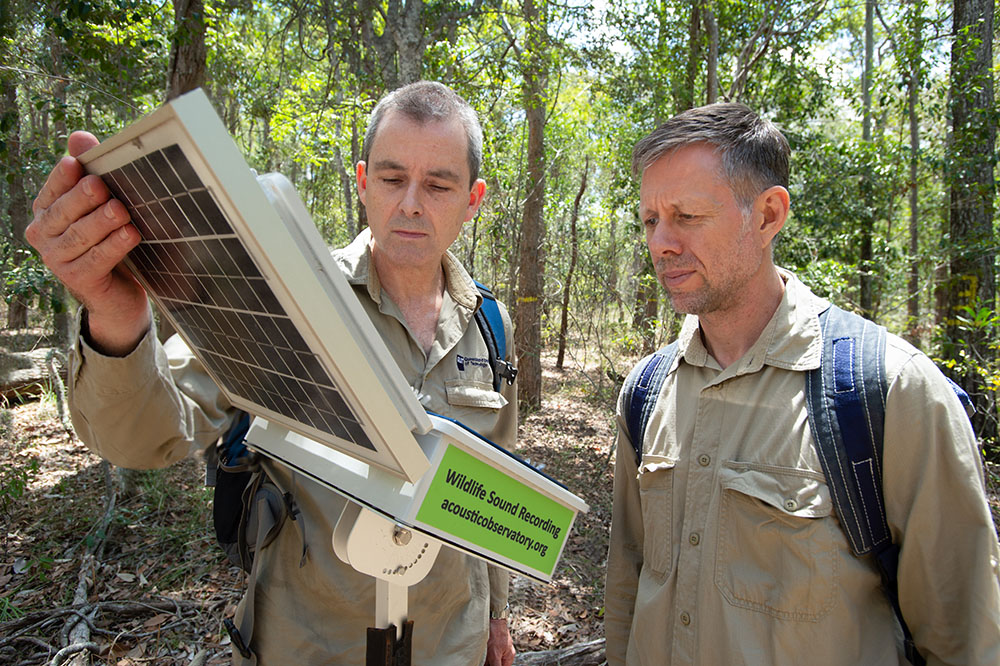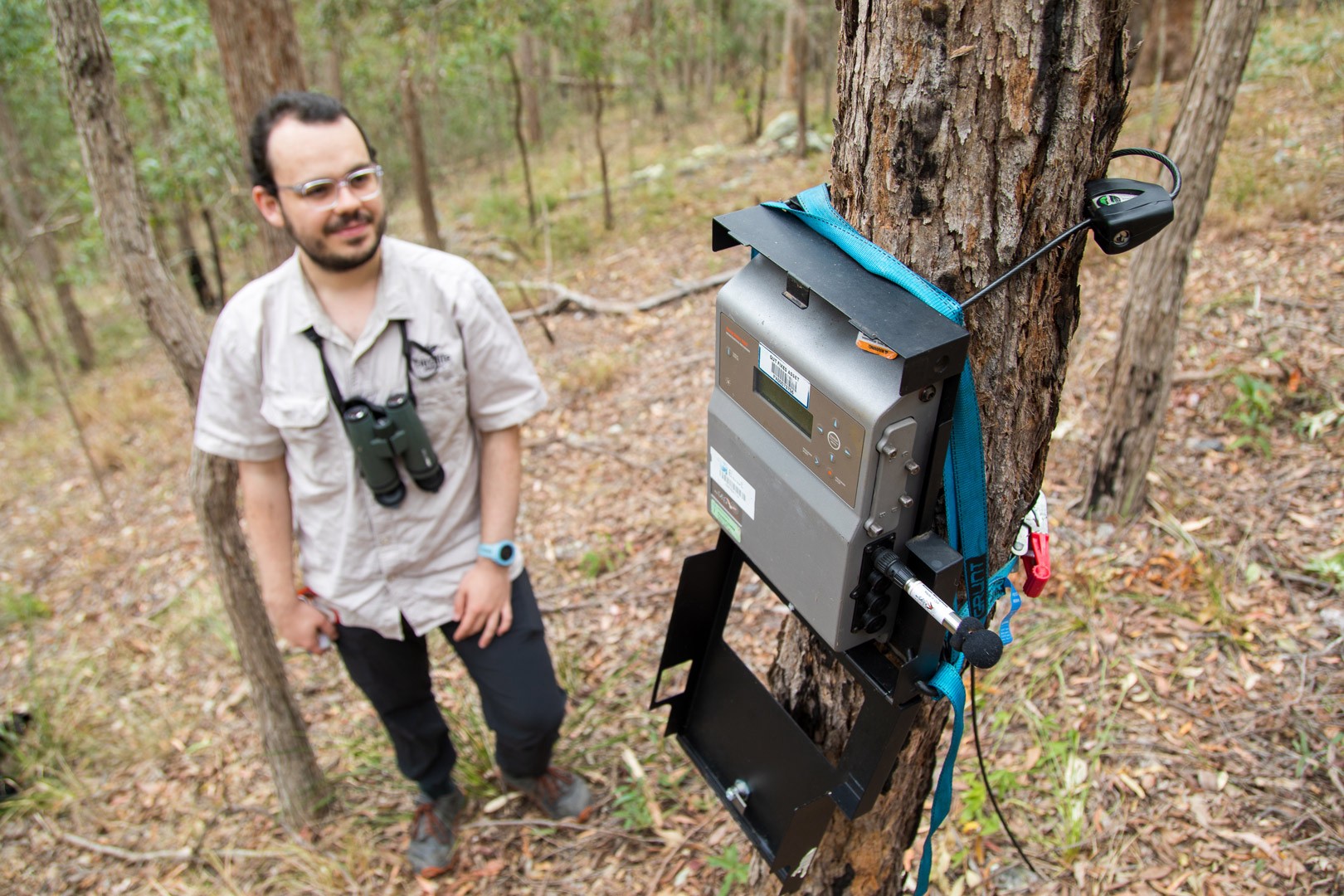Data from 263,000 hours of continuous recording of sounds of the night from throughout Australia will be available to citizen scientists to listen to and identify the calls of five native owls, and other wildlife, during ABC's Science Week interactive project, Hoot Detective, from August 14 to 22.
- Recordings from locations across the country take part in ABC Science Week interactive project
- The world's only bioacoustics observatory has 360 eco recorders throughout Australia
- Citizen scientists invited to listen to 10-second recordings and recognise calls of five native owl species
The 10-second sound bites were gathered by QUT's Australian Acoustic Observatory over two years from 360 continuous eco-recorders in 90 locations ranging from forests and grasslands to wetlands and deserts throughout Australia.
The data made available will contain night-time environmental sounds selected by artificial intelligence as having 'sounds of interest' for citizen scientists. They will then identify sounds in the audio clip from a short list of, for example, owls, frogs, or crickets.
QUT Australian Acoustic Observatory director Professor Paul Roe, from QUT School of Computer Science, said it was vital to engage the community in conservation of our native wildlife.

The Acoustic Observatory has recorded the sounds of the wild and made them freely available for many scientific purposes.
"We've become quite disconnected from our natural environment, and we know that connection with the natural environment is beneficial to our health and wellbeing," Professor Roe said.
"In terms of citizen science, we have plenty of data from the observatory, far too much for any one person to listen to or to analyse, which is why we need the help of citizen scientists."
"We also need help to refine and hone our automatic call recognisers, for this we need test data for training hence the need for annotated data sets and citizen scientists can help with this. "
The five feathered creatures of the night whose calls might be identified are the powerful owl, the barking owl, the boobook owl, the barn owl and the masked owl.
Prominent among this parliament of owls is Australia's largest owl, the powerful owl.
QUT ecology student Callan Alexander is conducting his master's study in bioacoustics to find out more about this threatened bird.
"Powerful owls' favourite foods are possums and gliders," said Mr Alexander, who has placed 16 recording devices at eight sites in South-East Queensland to capture their calls.
"Ringtail possums are usually their preference, but occasionally a brushtail will also do.
"Powerful owls have a variable diet will also eat flying foxes and other birds, lorikeets often being the bird of choice."
Mr Alexander aims to build an automated species recognition tool and create a library of powerful owl calls.

"So far, I have identified 12 different powerful owl vocalisations, they have quite a repertoire," he said.
"These owls are monogamous and form bonds lasting more than 30 years."
"The adults vocalise with each other and with their chicks. They are really good parents and look after their chicks up to 240 days after they have made their first flight."
Powerful owls can weigh between 1.24 and 1.7 kgs and nest in large hollows of old growth trees. They inhabit dry eucalypt forests and can usually be found near dense creeks and gullies where they are less likely to be seen.
"Powerful Owls are a highly cryptic species and are incredibly difficult to locate," Mr Alexander said.

"For this reason, we don't have a very good understanding of their distribution, particularly in more remote areas.
"Acoustic monitoring provides an excellent framework for improving our knowledge of this species, particularly if we can engage the help of citizen scientists to assist with processing large amounts of data."
The other owls in Hoot Detective are the:
- Australian boobook, our most well-known owl. This species is often referred to as a 'morepork,' but officially this name only belongs to an owl species found in Tasmania and New Zealand. It is a small brownish owl with a familiar 'boo-book' call.
- Barking owl is a medium-sized owl distinguished from the Australian boobook by heavy streaking on the underparts and its unusual 'woof-woof' call which sounds just like a barking dog.
- Barn owl is a familiar sight on rural fenceposts at night. It is a pale owl with a heart-shaped facial disk that is found on every continent except for Antarctica.
- Masked owl is often difficult to distinguish from the Barn Owl. It is typically more cryptic and secretive. It is larger, and darker than the Barn Owl, has stronger more feathered legs and a more rounded facial disk.
Professor Roe and QUT landscape ecologist Dr David Tucker manage the Australian Acoustic Observatory (www.acousticobservatory.org) which is partnered with the University of Queensland, University of New England, James Cook University, Charles Sturt University and Birdlife Australia, and funded by an Australian Research Council grant.






